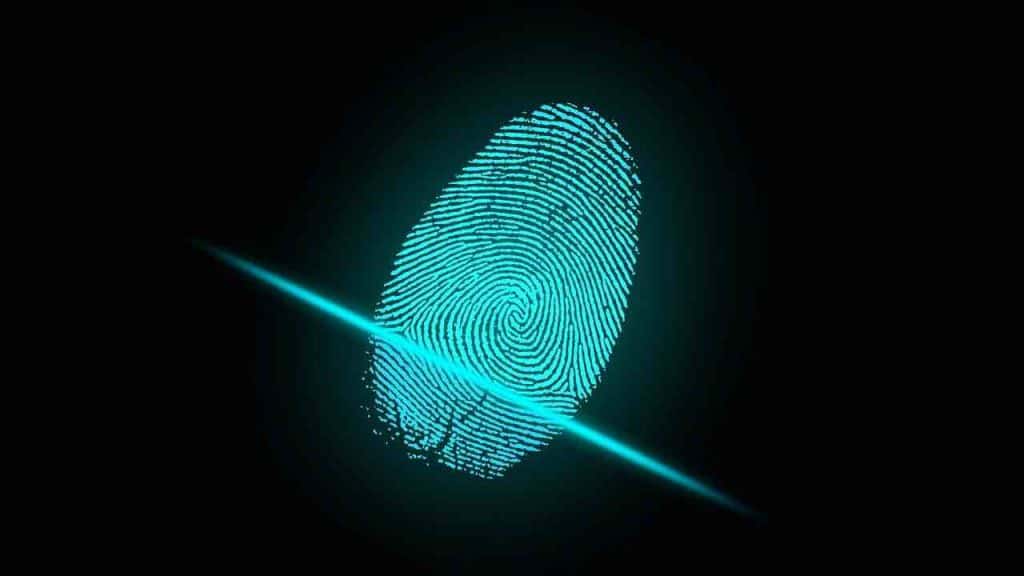The way we pay for goods, both at the check out and online, could soon be about to change, writes Lynne Jeffery.
For many of us, biometric authentication is already a part of everyday life. Mobile phone technology advancements mean that many of today’s smartphones feature biometric
In a 2017 survey by Visa of 1,000 Americans exploring the awareness and perceptions of biometric authentication, they confirmed that consumers ‘continue to have a strong interest in the new biometric technologies that make their lives easier’.
Two thirds of those surveyed (65%) reported that they are at least familiar with biometrics and in the two years since the survey was carried out, further advancements in mobile technology mean that percentage is likely to be higher today.
Research by Juniper Research found that mobile biometrics will authenticate US$2 trillion of in-store and remote payment transaction annually by 2023. This is a huge jump from the projected US$124 billion in 2018.
The Visa study found that the most commonly recognised forms of biometrics were:
- Fingerprint (65% have tried fingerprint recognition)
- Voice (39% have tried voice recognition)
- Facial (31% have tried facial recognition)
With the rise in mobile phones with fingerprint enabled technology and the introduction of facial recognition on phones like the Apple iPhone XS, Huawei Mate 20 Pro, Samsung Galaxy S9/S9+, LG V30 and Samsung Galaxy Note 9, it is likely that the awareness around these technologies has increased further still since the Visa survey.

How will payments be possible using biometrics?
The digital payment landscape is rapidly changing thanks to the introduction of biometric security. In a pilot rolled out by Visa across Europe and the US, payment cards are being fitted a fingerprint sensor that will act as an alternative to PIN or signature to authenticate the cardholder during a transaction.
The pilot is being managed through the Visa Ready for Biometrics programme, a new programme to support the growing demand for biometric payments in the payments category.
The technology allows customers to enrol their fingerprint, which is stored securely on the card. When the customer places their finger on the sensor during a transaction, the card senses whether the fingerprint is a match for the cardholder and authenticates the payment accordingly.
Biometric payment eco-system evolving
On-card biometric authentication is just part of an ever-evolving eco-system of biometric authenticated payments. Worldwide, China and India are some of the biggest adopters of mobile payments, often authenticated by biometrics. In China, WeChat Pay is the most popular payment method followed by AliPay.
In the US, the uptake of mobile payment methods has been a little slower as reported by CNBC. Apply Pay is the most popular of the mobile payment options but with just 9% of people using Apple Pay according to a Bain/Research Now Survey in 2018, mobile payments have still not been widely adopted, most likely down to the established credit/debit card system.
Another stumbling block for the wider adoption of mobile payments is the number of retailers signed up to accept contactless payments via Apple or Google Pay. As we move into a new decade, we are going to see the roll out of more contactless payment terminals, both in the retail space, but also in transportation. According to Business Insider, both New York City’s and Miami’s transit networks have begun integrating contactless payments for fares through contactless cards and mobile wallets like Apple Pay. This will likely increase the adoption of contactless payments, authorised using biometric authentication.
Benefits of biometric authenticated payments
As the biometric payment eco-system evolves, it’s important to understand the benefits of using biometrics to authenticate payments as well as understanding the potential drawbacks. According to the 2017 Visa survey, the top 5 benefits of using biometric authentication for payments include:
- Eliminate the need to remember multiple passwords and PINs
- More secure than passwords and PIN numbers because they confirm my identity
- I can’t forget/lose my authentication method
- I can pay anywhere/anytime because the authentication method is part of me
- Biometric authentication is easier/less of a hassle than entering a password or PIN
Early-adopters of biometric authentication will also be future-proofing themselves before the inevitable changes to the way all payments are authenticated in the future. Visa are leading the way when it comes to biometrics in credit/debit cards and it’s only a matter of time before other leading card providers follow suit. As trust in biometrics continues to grow, other forms of authentication such as PIN and password will slowly be retired.

Breaking down barriers around biometric authentication
According to the results of the Visa survey, some of the top concerns of using biometric authentication included:
- The risk of a security leak of sensitive information e.g. you can’t change your fingerprint if it is compromised
- Concern that biometric authentication won’t work well/will take multiple attempts
- The cost of owning a device that allows for biometric authentication
Concerns about security lead the way and this is understandable. Biometric authentication methods are individually unique, however once compromised, they become redundant. This is one of the biggest areas of focus for biometric companies and the area we are likely to see the biggest advancements moving forward.
In a recent blog post by NEC New Zealand, they analysed the future of facial recognition and what this might look like in 2020. One such area is the use of facial recognition for complete contactless payment. Your credit card details will be associated with your facial recognition profile and payment will be made simply by presenting your face. This is already under development in Taiwan and Japan at 7-Eleven stores who are rolling out staffless stores where customers can do everything from accessing the store to making a payment using their facial recognition profile.
As more people adopt biometrics authentication methods, trust will grow exponentially and eventually, the barriers to adoption will be broken down and biometric payment authentication will become part and parcel of everyday life.
It’s exciting to see global leaders like Visa investing in biometrics and looking at how they can make payment transactions more convenient for consumers whilst safeguarding transactions via biometric authentication.
From transport to retail, expect to see a much wider adoption of contactless payment via mobile devices in 2020 and expect to start seeing the first roll out of biometric authenticated debit/credit cards into the New Year.
Biometric technology advancements will help to break down barriers, improving the speed, security and reliability of payments authenticated using biometrics and instil a sense of security and ease-of-use with this form of payment authentication.
About the Author

Lynne Jeffery is the Head of Public Safety Solutions at NEC New Zealand. Lynne has over 20 years’ experience in the global technology sector with a specific expertise in biometrics and cyber security solutions.






